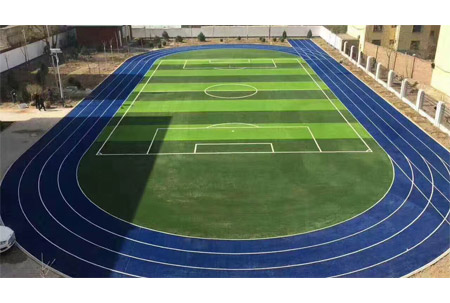Will Additives Affect the Quality of Essential Artificial Grass?
May. 21 , 2020
The quality of artificial turf is good or bad, but how to identify the
harmfulness of artificial turf? What are the hazards of artificial turf? There
are artificial turf hazard identification, lawn filling hazard identification
and artificial turf hazard identification to soil and plants. Landscape
Artificial Grass Factory mainly explains the methods of identifying the quality
of artificial turf and the hazards of inferior artificial turf.
Artificial Grass for Football Field
The hazard identification of the artificial turf layer mainly identifies the toxic and harmful chemical pollutants in the turf layer. Usually artificial turf layer contains chemical fiber materials, and chemical fiber materials often contain a lot of chemicals that affect health. For some turf manufacturers, in order to change the performance of chemical fiber, additives will be added to the raw materials, so that artificial turf has more new functions.
Of course, adding additives to Essential Artificial Grass raw materials will change the performance of artificial turf, and the improper use of inferior additives will cause secondary damage to artificial turf. Artificial turf additives include fillers, curing agents, plasticizers, stabilizers, flame retardants and colorants. Additives have a great influence on the quality of artificial turf.
The artificial turf layer added with fillers is mostly environmentally friendly. Most fillers have a reinforcing effect and change the properties of plastic lawns. Fillers account for approximately 40% -70% of the materials. Commonly used fillers include graphite and mica. Of course, the use of fiber fillers can improve the structural strength of materials; for example, mica fillers can enhance the electrical insulation of raw materials; graphite can improve the wear resistance of raw materials.
The inferior artificial turf layer needs to be added with a curing agent, so that the turf layer can form a body-shaped network structure, making it a relatively hard and stable rubber product; however, different turf layer resins have different curing agents added. For example, hexamethylenetetramine is added to phenolic resin.
The hazards of the above two additives are that the chemical fiber material has a certain harm to the environment and the human body; hexamethylenetetramine will cause the human body to cause dermatitis and eczema. Therefore, please stop the use of such unqualified artificial turf products immediately when the human body shows symptoms of discomfort, and please go to the local hospital for inspection immediately.
Inferior artificial turf plasticizers are commonly used dioctyl terephthalate, plasticizers mainly improve the plasticity and flexibility of raw materials during processing. Plasticizer hazard: It has a stimulating effect on the skin and mucous membranes, and has a slight sensitization effect; it may cause nausea, dizziness and toxic nephritis after being swallowed.
Our company also has Artificial Grass for Football Field for sale, please contact us.








